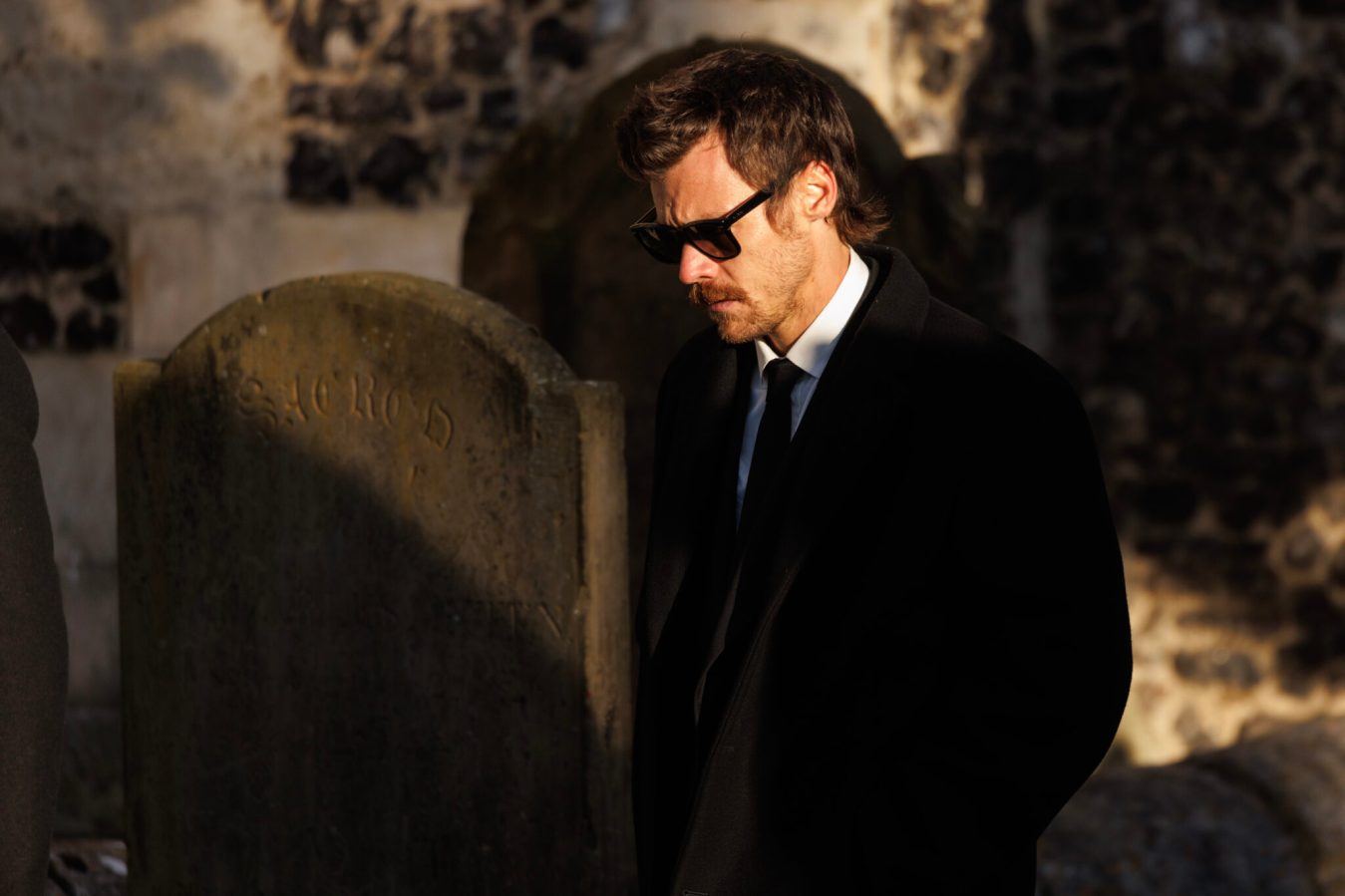Producing a hit TV series like The Bear was once a path to serious riches for its cast and creators. But in another massive entertainment shift, developing groundbreaking shows is worth hundreds of millions less than it used to be.

It wasn’t long ago that creating a hit show like The Bear was a TV writer’s ticket to lifelong financial security and, in a few rare cases, even a billion-dollar fortune. The half-hour drama, which returns to Hulu for its third season on Wednesday night, is everything a modern TV series aspires to be—an awards juggernaut, a ratings powerhouse and a cultural touchstone since its debut in June 2022. Even as recently as a decade ago, such success could have meant multiple 22-episode season orders and eventually a syndication deal that would produce a massive financial windfall for the studio, the showrunners and even the actors, who were traditionally given residuals for reruns and, in some instances, a slice of the profits.
But in today’s TV and streaming landscape, profit participation is all but extinct, and in most cases so are the profits themselves. In 2023, labor strikes shut down television production for half the year, and in its wake the fear of another economic downturn has caused a significant contraction across the industry, with widespread budget cuts, layoffs, lowball offers and far fewer shows being ordered. With less money to go around, talent representatives and studio executives are left to argue over how to divide up the pieces of a rapidly diminishing pie.
“What I keep saying to my partners on the studio side is, I hate the idea that my narrative of you is that all you do is cheat us and hide money and that’s who you are—for 50 years you’ve done nothing but cheat the talent,” says one lawyer who represents high-profile TV creators and actors. “The studio side narrative is, I can’t believe we ever cut these fucking people into our profits in the first place. They’re just talent and we put up all the money and how dare they.”
With a hit show like The Bear, Forbes estimates that series creator Christopher Storer earns $5 million per year in an overall deal with FX, with his fees for writing, producing and directing counted against that total. Instead of owning a percentage of the series’ profits, which TV creators had traditionally maintained for decades, Storer and co-showrunner Joanna Calo are rewarded for their success through a bonus pool based on a set of achievements, including season renewals, award nominations and streaming service rankings.
For Season 3 of The Bear—which swept the 2023 Emmy Awards, winning Best Comedy, Best Actor (for Jeremy Allen White) Best Supporting Actress (for Ayo Edebiri), Best Supporting Actor (for Eben Moss-Bacharach), as well as awards for Best Writing and Directing—Forbes projects those payouts will be a little more than $1 million for Storer and Calo. Combined, it’s enough to place them in the upper echelon of modern TV creators, but that’s less than one-tenth of what old guard showrunners like Dick Wolf (Law & Order), Greg Berlanti (CW’s Arrowverse), Taylor Sheridan (Yellowstone) and Shonda Rhimes (Grey’s Anatomy) make in a given year—with no visible path to eventually reach the economic stratosphere.

Rerunning Low: ‘The Bear’ will have produced 28 episodes by the end of its third season, far short of the traditional 100-episode threshold for syndication.
FX
Under the traditional TV syndication system, the potential existed for a hit series like Seinfeld or CSI to become its own cottage industry. Once a studio paid to produce the show, it would essentially rent it out to distributors—first a broadcast network, then cable channels, overseas markets and eventually streaming services—an infinite number of times. While most shows struggle to break even, a hit series would eventually reach profitability the longer it ran, and make astronomical profits in syndication.
In that system, each party was incentivized to produce as many episodes as possible, and as contracts came up for renewal on long-running shows, showrunners and actors had considerable leverage to negotiate for higher fees and profit participation.
The classic example is a show like Friends, which earned hundreds of millions each year, enough to make Warner Bros. Studios and NBC happy as well as the talent. Famously, in its third season, the six principal actors collectively negotiated to be paid equally for the duration of the show, earning $1 million per episode for the final two seasons as well as 2% of the show’s profits. In 2023, decades after Friends went off the air, Forbes estimates that Jennifer Aniston earned $17.5 million in residuals.
That all changed with the rise of streaming. In the new landscape, a single company acts as the studio that pays to produce the show, the network where it first airs and the syndication network where its catalog can be replayed, meaning there are fewer ways to capitalize on a breakout hit. Revenue through subscriptions remains relatively flat while a show’s costs rise over time, disincentivizing more episodes and more seasons.
The Bear, for all its buzz, will have produced 28 total episodes by the end of its third season, far short of the traditional 100-episode threshold for syndication. And because subscription revenue cannot be directly attributed to any one program, true profit participation for talent on either side of the camera is impossible to ask for.
Still, creators and actors were lured to streamers like Netflix over the past decade because they offered high up-front fees plus an additional buyout of back-end participation, essentially paying for every show as if it were a modest success. And because streaming services weren’t restricted by a broadcast or cable channel playing one piece of content at a time, they churned through dozens of new shows each year in search of one or two that could break through the clutter.
“The world is so much more fragmented now,” says Robert Fishman, a senior research analyst at MoffettNathanson. “The definition of a hit is clearly different in today’s streaming world than it ever was in the traditional TV world, and that’s the reality of how the business operates today.”
Meanwhile, streamers were building market share during a time when the only metric that mattered to Wall Street was subscriber growth. Cord cutting contributed to a steady decline in cable subscriber counts and broadcast TV ratings, especially among younger viewers. According to Nielsen, the median age of a primetime network viewer is now about 69 years old, a demographic that is less attractive to advertisers. As a result, fewer broadcast shows can reach profitability under the traditional economics.
Hoping to find a middle ground, Disney unveiled a new compensation model for TV talent in 2021 called “Series Bonus Exhibit,” or SBE, which it applied to all new shows across its brands (ABC, Fox, FX, Disney+, and Hulu). For a show like The Bear, a pool of SBE points, usually 50, are divvied up among showrunners, producers, pilot directors and top actors. Each point pays out a set amount when certain conditions are met, such as a “Longevity Bonus” for season renewals—roughly $20,000 for Seasons 2 and 3, escalating to nearly $100,000 by Season 4—a “Current Series Ranking Bonus” for a show that reaches the top 10 or No. 1 on the corresponding streamer’s most-watched rankings, and a “Critical Acclaim Bonus” for Emmy and Golden Globe nominations.
For Disney, SBE is a way to return to tying compensation to performance without having to calculate a show’s financial breakeven point, which often didn’t come until a seventh or eighth season and on several occasions led to intense legal battles and auditing to sort through profits owed to talent. In one instance, the actors and producers behind the Fox police procedural Bones took the network to court and landed a $179 million settlement.
In practice, SBE pays less guaranteed money to a greater number of shows but eliminates the potential for so-called “home runs” that might have paid a showrunner who was entitled to profit participation hundreds of millions of dollars over dozens of years.
For home run-hitting producers, there used to be a robust market for overall development deals to bridge the gap, such as the five-year, $300 million deal Netflix reportedly gave American Horror Story creator Ryan Murphy in 2018. But agents and lawyers working in Hollywood today say that kind of deal is no longer on the table—even Murphy and Netflix split up last year at the end of the term. Today, the average overall deal for a successful first-time showrunner might be no more than $1.5 million per year.
In recent months, Apple and Amazon, which have paid back-end buyouts for years, have been meeting with Hollywood talent representatives to present their versions of a bonus model for feedback. Amazon has been keen to highlight its potential for higher rewards in the case of a breakout series, while Apple includes new penalties for shows that go over budget. To talent representatives, it sounds a lot like television in a pre-streaming era.
“Everybody in the room laughed,” says one top talent lawyer who heard the pitch. “Because that’s the exact opposite of what Amazon did 10 years ago when they said this [buyout system] is better for you because even though there’ll be no more home runs, so many more people will get singles and doubles.”
Adding to the sense of déjà vu all over again, Netflix and Amazon are beefing up their commercial offerings, even making presentations at this year’s Upfronts to woo advertisers to their platforms. Elsewhere, Warner Bros. Discovery began licensing some of its HBO shows to Netflix last year, a form of third-party syndication that was previously unthinkable. And Warner and Disney announced they would bundle their collective streaming services to form something resembling old school cable.
Yet even if the future of television looks a lot like its past, it’s unlikely to create value for individual TV shows. On broadcast television, advertisers buy space during a specific program to reach that show’s audience, with rates varying based on ratings and demographics. That’s why commercials during the Super Bowl cost $7 million this year.
Digital advertising, meanwhile, targets individual viewers algorithmically and charges a rate based on how many people view it. A company might buy advertising space on Netflix and never know what programs it runs alongside. While Netflix might care that a hit show increases subscriptions or engagement time on the platform, an advertising boom won’t suddenly increase the value of a single show.
“Advertising on streaming isn’t intended to make money,” says Michael Pachter, managing director at Wedbush Securities. “Advertising is intended to broaden your reach and lower the price. You’re trying to make enough in ad revenue so that you’re indifferent whether someone has the ad supported or ad-free tier.”
For actors today, earning seven figures per-episode remains the industry’s high watermark just as it was in the Friends era, despite twenty years of inflation and season orders decreasing from 22 episodes on network television to around 10 episodes per season on streaming.
According to Forbes estimates, Bear star Jeremy Allen White will earn $750,000 per episode for the show’s third season, a significant raise from last year but as one veteran dealmaker put it, “if this was 2021, I would’ve expected it to be $1.2 million.”
At the heart of the issue is the disconnect between commercial and artistic interests. The Bear—which chronicles a talented Chicago chef (White) and his ambitious protégé (Edebiri) as they attempt to transform a downscale family restaurant into a fine dining experience—is a remarkably modern TV creation, and it’s difficult to imagine a show this intense sustaining its energy through multiple 22-episode seasons.
Even if that path were possible, it would likely be a far less attractive proposition for Storer and the cast, all of whom have become very in-demand since the show debuted in 2022. Reports claim the show filmed additional episodes in Chicago this spring, leading many to speculate that its fourth season could be its last.
“Unfortunately in the arms race of streaming, people forgot that historically television has been a B to B+ content model for stickiness to sell ads,” says the same dealmaker. “As compared to making A+ 10-part movies that would then become something that everybody has to see and spend $10 million per episode on, the model just doesn’t really work for that.”
Are you – or is someone you know -creating the next Afterpay or Canva? Nominations are open for Forbes Australia’s first 30 under 30 list. Entries close midnight, July 15, 2024.
Look back on the week that was with hand-picked articles from Australia and around the world. Sign up to the Forbes Australia newsletter here or become a member here.


